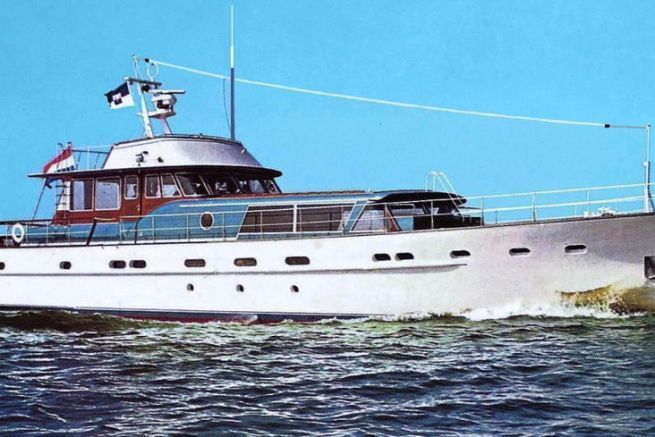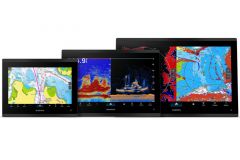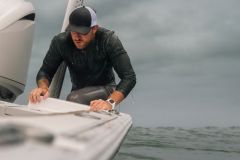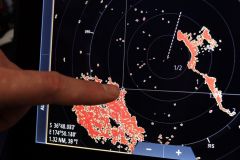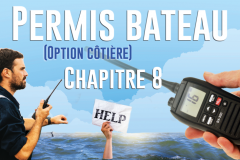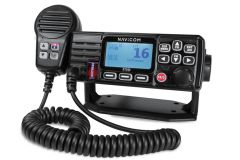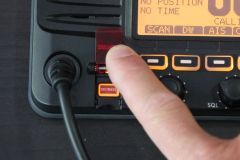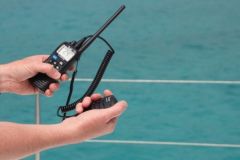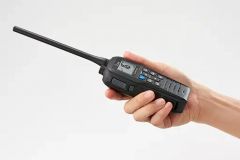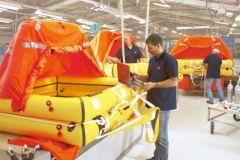We are using more and more equipment on board that works on wireless technologies. For this, these devices communicate in the ether, by radio waves. And who says radio waves often says, interference and jamming, either directly by transmodulation (ability of a receiver to pick up a nearby emission made on another frequency than its working frequency) or by harmonics (residual presence of the radio wave at multiples of the initial working frequency).
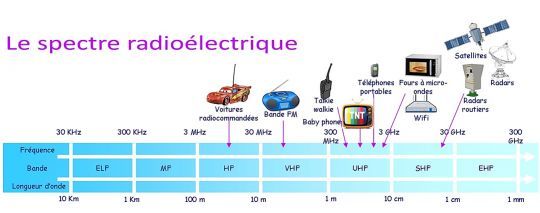
The right antenna, in the right place
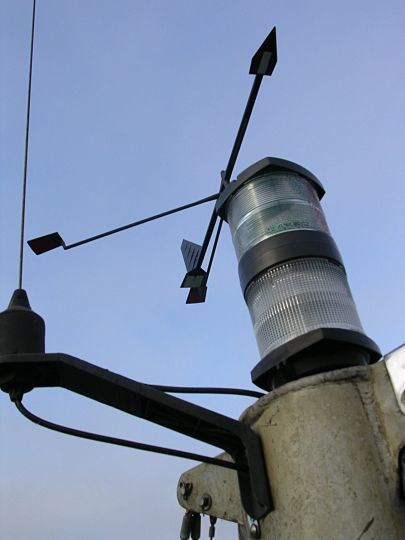
To begin with, let's talk about wavelength. In principle, the radiating element ( i.e. the one that will project the radio wave ) should measure an entire wavelength to, in theory, work best.
This wavelength ( called Lambda and symbolized by ? ) is calculated by the following mathematical formula:
? = 300 000/Frequency (Khz)
Thus, a frequency of 300 Mhz corresponds to a wavelength of one meter. The "perfect" antenna will thus measure one meter. This makes it easy to understand the length of the antennas used for HF transmissions. At 30 Mhz the antenna measures 10 meters, 100 meters at 3 Mhz, 1 kilometer at 300 Khz and 10 at 300 Hz. In order to "emulate" antennas operating at such low frequencies, chokes and other electronic devices are used when the space requirement does not allow the installation of a full wave antenna.
Therefore ideally one should avoid installing two antennas that operate on the same frequencies at a distance of less than a full wave. Even more so, if one of these two antennas is picking up waves ( receives it, an AIS for example ) and the other radiates ( transmits, a VHF for example ).
Speaking of location, an antenna is installed as high as possible above the sea, always in search of the compromise between cable length / ease of access / efficiency.
The cables also radiate
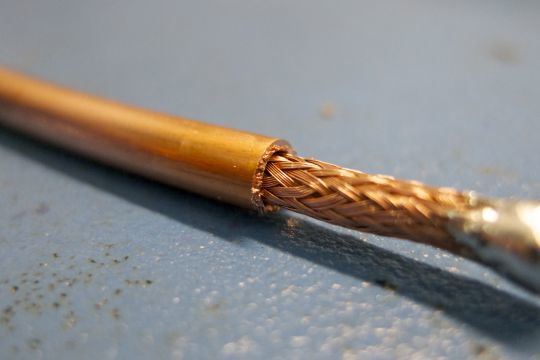
If the antenna is used to project electromagnetic waves into the air, the antenna cables ( that carry the signal from the transmitter to the antenna ), often coaxial, have the unfortunate tendency to behave like antennas. All the more so if they are of poor quality and if, as is the case on our boats, the ground connection ( which creates a radiation limiting screen ) is impossible. For this reason we recommend, as far as possible, to use the largest possible section of coaxial cable, adapted to the transmitter and the antenna in impedance and to avoid running several antenna cables in the same place or at least in the same sheath. Easier said than done, in the mast of a boat where everything is shared...
Therefore, in order to limit this radiation as much as possible - radio installation is made of compromises - we recommend to reduce the length of the connections between antenna and transmitter as much as possible and to respect the wavelength and its multiples here as well. The ideal length of an antenna cable will remain the same as the antenna, i.e. a whole wave. Like the antenna, a multiple or sub-multiple is also possible.
Tip: roll the excess cable over itself by placing ferrite sticks at 90° to each other on the strand thus created. Finally, identify each strand by its use to facilitate maintenance.
The harmonics
When an element vibrates ( an antenna, a wave on the water or a sound ), it produces several waves.
The first is fundamental, it constitutes the working frequency. Central, it is based schematically on the mixed frequency of vibration of the quartz of the transmitter.
The others are harmonics. They exist empirically at twice the fundamental at half the initial power. Their power ( amplitude ) is divided by two again at twice the first harmonic ( quadruple of the fundamental ). This presence is renewed each time, as long as the residual signal is lower than the background noise.
This approach is extremely empirical. The exact formula for calculating the amplitude of the harmonic is f(t) = sin (1wt) + sin (2wt) + sin (3wt) + sin (Nwt)
It is by experimenting with this phenomenon of harmonics that we understand that, on a boat, by transmitting a message by VHF ( 150 Mhz ), one can disturb the reception of the TNT television ( 600 Mhz ).
As far as possible, we recommend that you avoid operating devices that are located in harmonic relation to each other. Again, this is obvious to write, much less to apply, when you do not select your working frequency. The only conceivable precaution is to keep the antennas as far apart as possible from each "fundamental/harmonic" pair.
The electrical circuit
Our on-board electrical circuits are the next involuntary actors in the quality of our radio installations. They also carry a quantity of electromagnetic waves which, when mixed, can disturb the efficient operation of our installations.
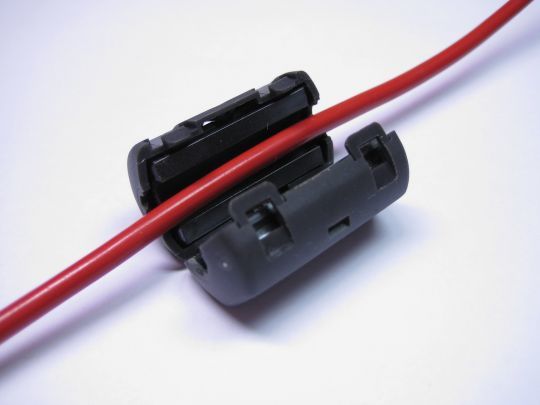
A common solution to this problem is to wrap the power cord around a ferrite stick.
Keyboard, mouse and earpieces, sources of disturbance
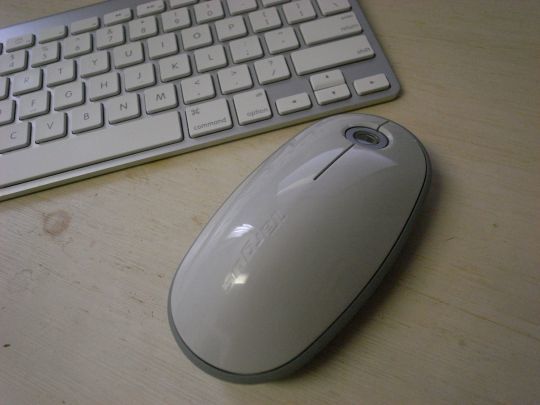
Some of the equipment we use on board are, in fact, transmitters that we do not know. In the register of these equipments are the MOB-AIS on the one hand ( which operate on a 160 MHz frequency ). Rarely in use - let's hope they are not - they do not represent a hindrance to the radio management on board.
Another family of invisible transmitters are keyboards, mice, headsets and other wireless Bluetooth devices. They work on a centimetric frequency ( 2500 MHz ). It is of course unimaginable to isolate them or to change the cable of their antennas, so the solution is to do without them as much as possible. Another advantage of not having them on board is that a keyboard or mouse, connected by its USB cord, will be much less likely to fall to the ground than left free to move.
Think before you install
If there is no absolute secret to optimize your onboard radio installation, it is by accumulating precautions ( quality cables in good length, antenna spacing, no Bluetooth .. ) that you will get the best possible installation and operate, with the minimum of electromagnetic interference the communication equipment of your boat.

 /
/ 